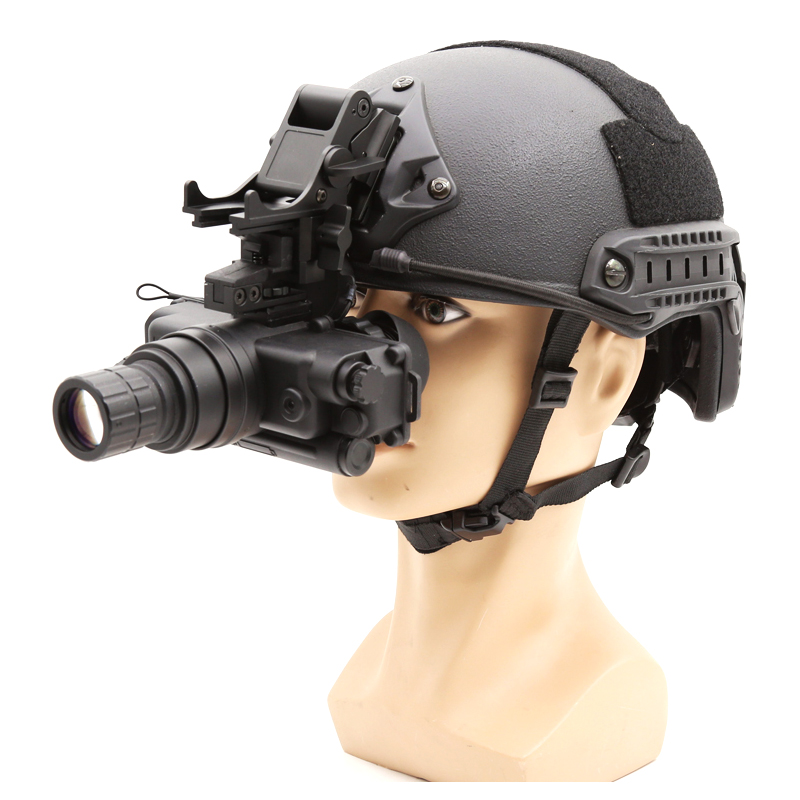December 13, 2024By: MH TECHView: 281

1. Low-light night vision goggles
Advantages
Good concealment: Low-light night vision goggles mainly rely on weak natural light, such as moonlight, starlight, etc., and generally do not emit signals themselves, so it is not easy to be discovered by the enemy. When performing covert reconnaissance missions, this feature allows users to better hide their positions.
Natural imaging: The image it forms is similar to the scenery seen by the naked eye during the day, and it is more intuitive. Observers can easily identify targets based on familiar object shapes, outlines, etc. For example, during night patrols in the suburbs of the city, targets such as buildings, roads and vehicles can be clearly distinguished.
Lower cost: Compared with infrared night vision goggles, especially thermal imaging type infrared night vision goggles, the manufacturing technology of low-light night vision goggles is more mature and the cost is relatively low. This makes low-light night vision goggles have certain advantages in some military and security application scenarios that are more sensitive to cost.
Lightweight and easy to carry: Usually, the structure of low-light night vision goggles is relatively simple, small in size, and light in weight, which is convenient for individual soldiers to carry and use for a long time. For example, some portable low-light night vision goggles can be easily installed on helmets or handheld for use, without bringing too much burden to users.
Disadvantages
Dependence on ambient light: The performance of low-light night vision goggles depends largely on natural light in the environment. In an environment without natural light, such as in caves, underground facilities or dark nights (no moonlight or starlight), its observation ability will be greatly limited, and it may even fail to work properly.
Susceptible to interference: Severe weather conditions, such as dense fog, heavy rain, heavy snow, etc., will seriously interfere with the observation effect of low-light night vision goggles. These weather factors will scatter and absorb light, reducing the amount of light entering the night vision goggles, resulting in blurred and dim images, and inability to effectively identify targets.
Limited observation distance: Compared with some high-performance infrared night vision goggles, the observation distance of low-light night vision goggles is relatively short. Especially for some targets with low contrast, their details may not be clearly observed at a longer distance.
2. Infrared night vision goggles
Advantages
Not affected by light: Active infrared night vision goggles form images by emitting infrared rays and receiving reflected light, while passive infrared night vision goggles (thermal imagers) rely on the target's own thermal radiation to form images, so they are not restricted by lighting conditions. Whether in a completely dark environment or in an environment with strong light, they can work normally and effectively detect targets.
Strong penetration ability: Infrared radiation has a certain penetration ability, especially for some obstructions, such as smoke, mist, and some vegetation. Infrared night vision goggles can penetrate these obstructions to find the target behind. In military operations or rescue work, this penetration ability can help users quickly locate targets in complex environments.
Strong target recognition capability: Thermal imaging type infrared night vision goggles can form images based on the temperature difference between the target and the background, and can clearly show the thermal profile of the target. This feature allows it to identify camouflaged targets, such as people hiding in the bushes or camouflaged military equipment, because even if the appearance is camouflaged, its thermal signal characteristics are still difficult to hide.
Disadvantages
Active infrared is easy to expose: Active infrared night vision goggles need to actively emit infrared rays, which is like a lighthouse and can be easily discovered by the enemy's infrared detection equipment, thereby exposing the user's position. Therefore, in some scenarios that require covert actions, there is a greater risk of using active infrared night vision goggles.
High cost: Especially thermal imaging type infrared night vision goggles, which have a high technical content and involve complex infrared detectors, signal processing and other technologies, resulting in high costs. This makes it subject to certain restrictions in large-scale equipment troops or some application scenarios with strict cost requirements.
Imaging quality issues: Some infrared night vision goggles, especially some low-end active infrared night vision goggles, may have problems such as false color and low resolution. These problems will affect the detailed observation and accurate identification of the target, and users need to have certain experience to distinguish them.